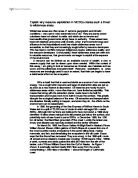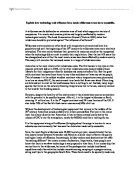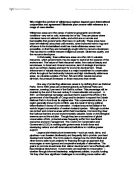- To demilitarise Antarctica, to establish it as a zone free of nuclear tests and the disposal of radioactive waste, and to ensure that it is used for peaceful purposes only;
- To promote international scientific co-operation in Antarctica;
- To set aside disputes over territorial sovereignty.
The Treaty remains in force almost indefinitely. The success of the treaty has been the growth in membership. 44 countries, comprising 80% of the world’s population, have acceded to it. Consultative status is open to all countries who have demonstrated their commitment to the Antarctic by conduction significant research. 27 nations have consultative status. The treaty parties meet each year. They have adopted over 200 recommendations and negotiated five separate international agreements: -
- Agreed Measures for the Conservation of Antarctic Fauna and Flora
- Convention for the Conservation of Antarctic Seals
- Convention for the Conservation of Antarctic Marine Living Resources
- Convention on the Regulation of Antarctic Mineral Resource Activities
- Protocol on Environmental Protection to the Antarctic Treaty
These, together with the original Treaty provide the rules, which govern activities in Antarctica. Collectively they are known as the Antarctic Treaty System. The treaty itself has worked wonders in the conservation of the Antarctic. All refuse and waste is removed and the adherence to the Protocol should minimise accidents such as oil spills. The greatest impact on the Antarctic is imported through the oceans and the atmosphere. The ozone hole was caused by CFCs mainly released in the Northern Hemisphere. DDT and lead found in Antarctic ice and penguins eggs originated from agriculture and transport policies in the developed world. So perhaps the next step would be to reduce impact on the Antarctic from other areas.
The forests of Congo are home to a diverse range of large mammals, birds, trees, plants and flowers, and this extraordinary biodiversity is part of the nation's heritage. However, many people depend on the country's forests for their livelihood, and along with off-shore oil reserves they are Congo's greatest natural resource. The challenge is to benefit from this wealth without destroying it. WCS-Congo and the Congolese government believe that one solution is to manage these resources through the creation of Protected Areas surrounded by 'buffer zones', where economic and other activities are strictly controlled. There are different types of Protected Areas, with National Parks providing the greatest degree of protection.
Congolese law defines a National Park as an area in which 'only activities that are necessary for the conservation or for the restoration of the natural richness that were the objectives of creating the Park' are permitted. This means that any activity that involves the extraction of natural resources, such as hunting, fishing or logging is prohibited, and priority is given to areas such as research and tourism. Two activities that threaten the forests are irresponsible logging and the hunting of wildlife for meat. These threats are inter-linked, and neither their effects nor the preventative measures they necessitate can be considered in isolation. For example, logging not only involves the removal of certain species of trees from large areas of forest, but also brings with it a large influx of people who provide a market for bushmeat and may also hunt themselves, as well as well-maintained roads which allow poachers to penetrate previously inaccessible areas. WCS-Congo is engaged in many activities to try and protect the forests against these threats. The Buffer Zone Project works with the local logging company to reduce the negative effects of the logging and promotes conservation in the logging camps. Various research and scientific monitoring programmes, including aerial surveillance, regularly collect data on many different aspects of animal and human activity. Training programmes for Congolese staff ensure that nationals gain the skills necessary to conserve the nation's heritage. Law enforcement is undertaken by teams of Eco-guards, who conduct regular patrols of the Protected Areas and their boundaries. The patrols are led by one of the government Protect area staff, accompanied by five or six Eco-guards and porters who know the local area. If these patrols apprehend poachers, there are several sanctions available, depending on the severity of the situation. Poachers found with elephant guns, automatic weapons, or integrally protected species, are arrested and taken to the administrative capital of the region to face prosecution. Small-scale poachers have their firearms and any other belongings linked to poaching confiscated, are given a warning, and, if appropriate, are prosecuted. Despite being a LEDC, the WCS and the Congolese Government have adopted a highly sustainable protection scheme that produces very little conflict. This particular National Park scheme has very specific rules to minimise impacts that will affect the natural balance of nature. However, The Lac Télé and the Nouabalé-Ndoki reserves are very newly created and the Conkouati-Douli National Park has only been controlled by the WCS for 5 years. They are still finding ways of measuring and reducing impacts so the success of the project is soon to be revealed.
Although National Parks and Treaties have proved successful in Utah, USA they have adopted a different approach. After Congress passed the Wilderness Act the citizens of Southern Utah grouped together with the intention of preserving America’s Red Rock, and formed the Southern Utah Wilderness Alliance. They focus their attention on grassroots activists and public outreach campaigns. The mission of the Southern Utah Wilderness Alliance (SUWA) is the preservation of the outstanding wilderness at the heart of the Colorado Plateau, and the management of these lands in their natural state for the benefit of all Americans. SUWA promotes local and national recognition of the region’s unique character through research and public education; supports both administrative and legislative initiatives to permanently protect the Colorado Plateau wild places within the National Park and National Wilderness Preservation System or by other protective designations where appropriate; builds national support for such initiatives on both the local and national level; and provides leadership within the conservation movement through uncompromising advocacy for wilderness preservation. The allegiance of fiercely loyal defenders of Utah wilderness is reflected in their continued success: the annual increase of activists, the number of anti-wilderness proposals defeated, and the record support obtained for America’s Redrock Wilderness Act. The SUWA has successfully fought off any opposition for conflicting land use. Despite being supported by congress in the first place, once the Republicans took over the House of Representatives in 1994, it opened a window of opportunity for wilderness opponents. Under the Bureau of Land Management the Republicans tried to require back land for industrial use. They claimed they needed to bring keep local employment high. But the fact that only 1% of the local workforce was in mining, mean that plans for the foreign owned Andalex coal mine on the Kaiparowits Plateau was dashed. Although there is still much conflict between the SUWA and the Bureau of Land Management, the SUWA has done a superb job at retaining the natural state of America’s redrock, considering they have had little government support from the start.
Despite so many affective management schemes there are also a number of cases of bad or unsuccessful management. One of the most prominent cases is the Brazilian regions of the Amazon. The country’s fascination with expensive mega projects and short-term economic gain continues unabated, and most of the available evidence points to a troubled future for the world’s biggest rainforest. The government is more than keen to attract people in and 300,000 gold prospectors roaming the amazon basin have been affected by the steady reduction on alluvial reserves of the metal, and many have turned to drug dealing, which is a whole other problem for the government. The Amazon basin has 20% of all drinkable water of the world and accounts for 16% of the water flowing through all rivers off the world. But bad management is undermining the immense potential of this watershed to meet human needs-pollution from the mercury used by gold miners is making the water unsafe, even for fish. A Japanese study showed that in recent years the harvest of fish has dropped up to 50%. Exports of some prized species such as the piramutaba - a delicacy for Japanese consumers – have fallen dramatically. The future of the Amazon as a freshwater fishery could suffer further damage from a series of projects to make its rivers navigable. The first of the big waterways came into service in March 1997, which carries 300 000 tonnes of Soy beans annually when fully operating, This, along with 4 other waterways projects is increasing soil erosion of the fragile banks rapidly.
It is not just wilderness areas in money hungry countries that experience bad management issues. The USA has had more than its fair share of problems as far as management is concerned. Until now America has overlooked local, regional and global uses and influences on public uses, particularly in its National Parks. They have also failed to realise that there are global climate changes that affect their natural resources. There is a much larger urban population now than rural based and these people have very different values. Economic trends influence land use. Recreational uses are increasing and traditional uses are decreasing. In many cases the National Park Service has not considered these changes. At an annual meeting of local NPS officials the main issues of bad management were pointed out. The Alaska National Park concentrated on single species management. The spotted owl management areas created a false environment that scared wildlife away, instead of encouraging the breeding of a rare species. There were also lots of social costs involved. Professional advice was not sought after from the start. There was lack of communication with all interested parties. Congress were more concerned with getting re-elected. All these factors contributed to the failure of the Spotted Owl Project. A number of problems were caused from conspiracies within the Congress. They false economy by agreeing to supply some commodities to other countries. By falsely creating economies to use the lumber of Forest Service lands, this leads to boom and bust in local economies. Oil and gas demands for areas adjacent to park and wilderness areas have local and global implications. The Artic National Wildlife Refuge has a good way of protecting the environment but it has one of the biggest reserves of oil. Although the wildlife is heavily preserved the federal government is unable to take care of the natural resources for the greater good of the public. In so many cases the National Parks Service overlooks so many issues that will lead to bad management and increased conflict. They are only just beginning to consider the ever changing needs of the public and the implications of the actions that they may or may not take.
Ayres Rock, or Uluru as it is known natively. It is a huge part of many Aboriginal’s way of life and you could even say it is the focal point for all importance concerning religion and the way they live their life. When the Uluru National Park was under control of the local authority it was not under sustainable management and the lives of the Anagu indigenous people were horrendously at risk. Their spiritual beliefs were soon to be shattered if a new way of management was not soon adopted. So in order to reduce conflict with the indigenous people came up with the concept of having some of the Anagu tribe managing the park. After all, they had spiritual understanding of how ecology of the rock works. It is passed down over many generations so if anyone knows the rock best. It is the Aborigines. This method soon became known as Aboriginal Science and it has evolved to allow human being to fit into the ecology. They understand the ethics of land so are able to keep their traditional faiths and keep the park sustainably managed. This generally reduces the biggest conflicts as they will always have the environment’s best interests at heart, and people have learnt to appreciate this.
Banff National Park in has also managed to adopt a sustainable management plan that has resolved conflict in many areas. There was once much conflict over land use but now the method of Land use zoning is used to establish the desired level of protection, use and facility development on specific park lands. There are five land use zones in the system employed by Parks Canada.
Zone I - Special Preservation
Unique, rare or endangered features are found in these areas, and as a result, public access is strictly controlled. Four percent of the park, in four separate areas, requires special preservation.
These areas are: the Clearwater-Siffleur area, which contains several important features - the range of Alberta's southernmost Woodland caribou herd; the hoodoos; areas of permafrost; prehistoric cultural sites; and wolf and grizzly habitat.
-the internationally significant Castleguard Cave system and meadows.
-the Cave and Basin Marsh
-the Christensen archaeological site along the Bow Valley Parkway, which contains at least nine separate periods of human occupation, the earliest dated at 8,000 years ago.
Zone II - Wilderness
Approximately 93 percent of the park will be managed as wilderness. Banff, along with Jasper National Park to the north, will continue to provide most of the large wilderness areas in the Four Mountain Parks.
These are extensive areas that represent the natural history themes of the park; much of this land consists of steep mountain slopes, glaciers and lakes. Zone II areas cannot support high levels of visitor use and facility development, so limits may be placed on the number of users. No motorised access is permitted, and man-made development is restricted to trails, backcountry campgrounds and primitive shelters.
Zone III - Natural Environment
About one per cent of the park falls into this transition between Zone II - Wilderness and Zone IV - Outdoor Recreation. Low density outdoor recreational activities and modest visitor facilities, such as backcountry lodges, are allowed in this zone. Non-motorised access is preferred, although public transit is permitted.
Zone IV - Outdoor Recreation
Outdoor recreation zones accommodate a broad range of recreational opportunities and facilities that are compatible with the natural landscape. About one per cent of the park is Zone IV - Recreation. It includes ski areas, road right-of-ways, picnic areas and other similar developments
Zone V - Park Services
The town of Banff and the hamlet of Lake Louise are the Zone V areas, covering less than one per cent of the park. Land use within the town of Banff is governed by the municipality (Town of Banff), while Lake Louise is still under the control of Parks Canada as of March 15th, 1995.
Environmentally Sensitive Sites
The Environmentally Sensitive Sites (ESS) designation is applied to areas containing significant and sensitive heritage resource features that require special protection. Unlike Zone I areas, an ESS can accommodate relatively high levels of controlled visitor activity without jeopardising its resource values. The Vermilion Lakes wetlands and the Middle Springs on Suphur Mountain are the two ESSs in the park.
This land-use zoning project has insured that people can enjoy the wilderness area but the environmental impacts are minimised. Conflicts have been reduced and the project has continued for a number or of years unhindered.







